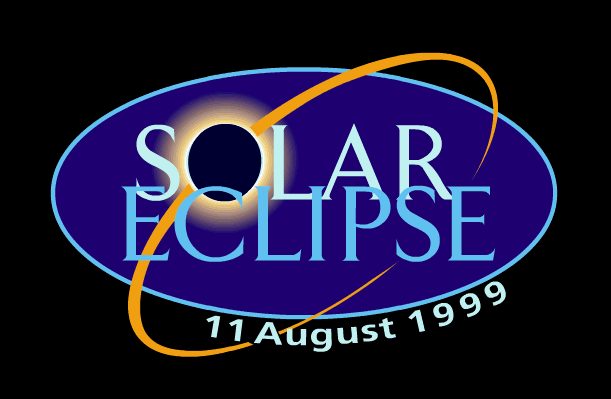 Solar
Observations using Lunar Occultation
Solar
Observations using Lunar Occultation Solar
Observations using Lunar Occultation
Solar
Observations using Lunar OccultationSo far we have dealt only with the effect of the eclipse on the earth. There is another completely different field of study which the solar eclipse enables. This is the study of the sun itself. The passage of the moon across the sun can be used to determine the precise position of radio sources on the sun itself. This is called occultation; the moon acts as a huge shield, cutting off the radiating source as it passes in front. A unique position can be determined for discrete sources by observing their disappearance and re-appearance; while the general solar radiation decreases continuously as the moon covers the sun, then re-appears in the same way.
This type of experiment is described by Emerson [see reference below], in which observations were made of the solar noise at 144 MHz out of two partial solar eclipses. One, occurring at a time near a minimum in the solar cycle (May 1994) showed only general solar noise spread across the solar disc. The other event took place near solar maximum (July 1991); in this case discrete sources were found, and their positions and radio brightness (source temperature) accurately determined. In the case of position this was within 3 arc-minutes (1/20 degree). By comparing with a photograph made at the same time, the sources were determined as being close to, but not co-sited, with a sun spot cluster.
Any modern DX station should have no trouble detecting solar noise on the VHF/UHF/microwave bands; comparative observations on the different bands (144 MHz - 47 GHz) could give useful information about the mechanism involved in its production. This reference is also useful for showing a simple receiver noise detector and integrator with variable time steps, which can be used as an interface to a meter, chart recorder, or computer.
You could try measuring the percentage
polarisation of the solar radiation on the VHF and UHF bands.
The Faraday effect rotates the direction
of polarisation as it passes through the ionosphere, so that the direction
of polarisation will be lost; however, the direction will be continuously
changing due to the disturbed state of the ionosphere caused by the eclipse.
If a linear polarised antenna is used, plotting the signal as a function
of time should show a sinusoidal curve, the difference between minima and
maxima indicating the degree of polarisation. This could give useful information
regarding the mechanism of generation.
If you want to be really ambitious,
you could try to observe on more than one VHF/UHF frequency at once, giving
some spectral information on the solar emissions. This would be an interesting
summer vacation project for a school science group or university students.
More information on making solar noise measurements near the amateur 144 MHz band is given in :
D. Emerson, G3SYS/ AA7FV, "Radio
Observations of Two Solar Eclipses", QST (Feb 1995) pp. 21-26.
JC.D. Marsh, "Measurement and analysis
of radio emission from the quiet sun"; J.B.A.A. 108, 6 (December
1998) pp. 317 - 319
G. H. Grayer, Chapter 2 "VHF/UHF
Propagation" of "The VHF/UHF DX Book", ISBN 0-952-046-80-6 (Ed. I.F. White
G3SEK), p. 2-62.
nbsp;J. Morris, G4ANB, "Locator
System for VHF and UHF"; Radio Communications 56, 11 (November 1980)
pp. 1160 - 1163..